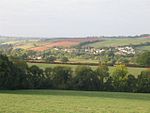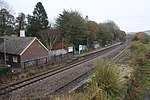West Country English

West Country English is a group of English language varieties and accents used by much of the native population of South West England, the area sometimes popularly known as the West Country.The West Country is often defined as encompassing the counties of Cornwall, Devon, Dorset, Somerset, Wiltshire, the City of Bristol, and Gloucestershire. However, the northern and eastern boundaries of the area are hard to define. In the adjacent counties of Herefordshire, Worcestershire, Hampshire and Oxfordshire it is possible to encounter similar accents and, indeed, much the same distinct dialect but with some similarities to others in neighbouring regions. Although natives of such locations, especially in rural parts, can still have West Country influences in their speech, the increased mobility and urbanisation of the population has meant that in the more populous of those counties the dialect itself, as opposed to various local accents, is becoming increasingly rare. Academically the regional variations are considered to be dialectal forms. The Survey of English Dialects captured manners of speech across the South West region that were just as different from Standard English as any from the far North of England. There is some influence from the Welsh and Cornish languages depending on the specific location.
Excerpt from the Wikipedia article West Country English (License: CC BY-SA 3.0, Authors, Images).West Country English
Teignbridge Tedburn St. Mary
Geographical coordinates (GPS) Address Nearby Places Show on map
Geographical coordinates (GPS)
| Latitude | Longitude |
|---|---|
| N 50.716666666667 ° | E -3.7166666666667 ° |
Address
EX6 7AJ Teignbridge, Tedburn St. Mary
England, United Kingdom
Open on Google Maps











